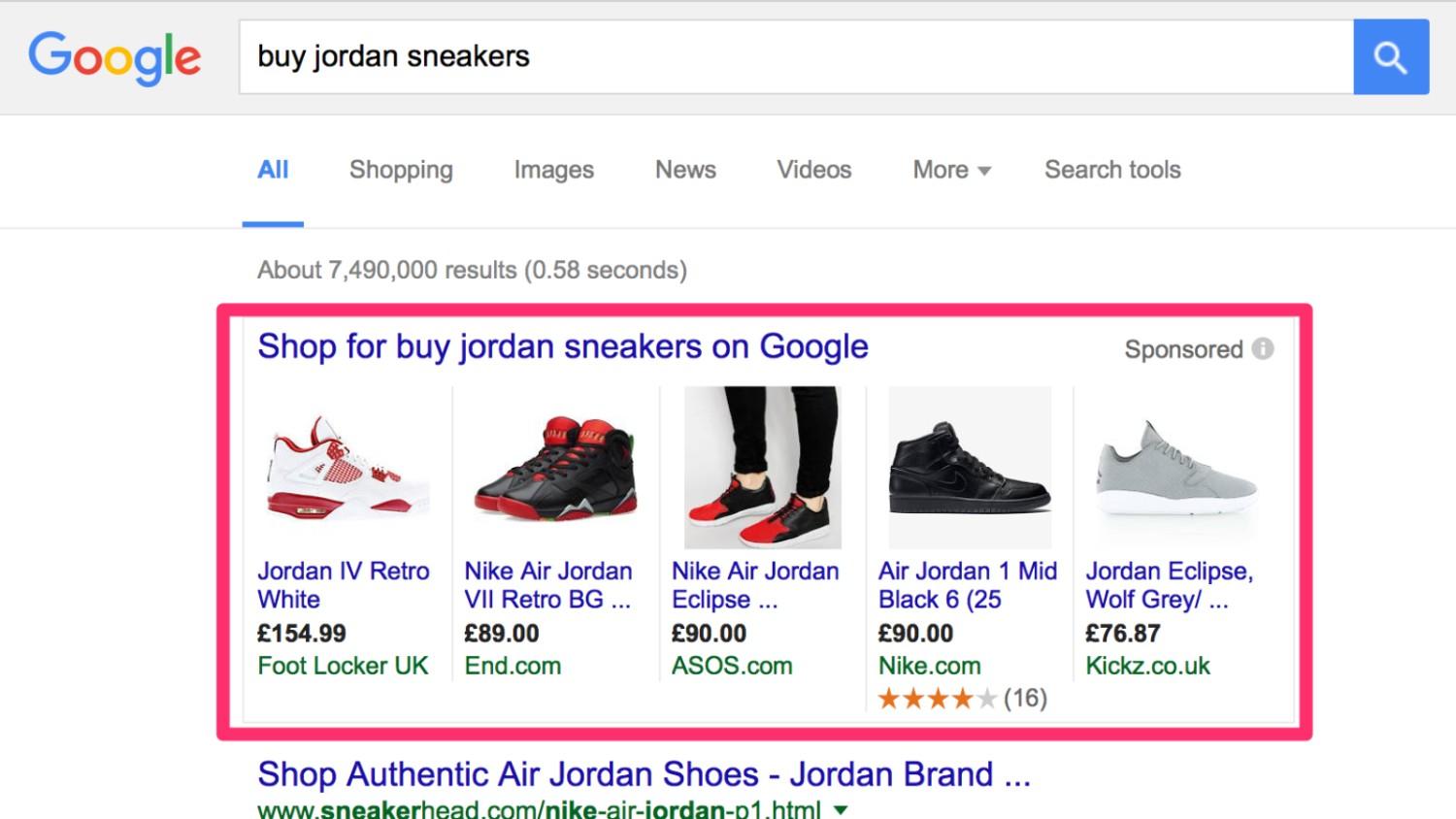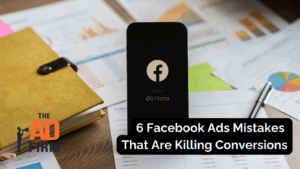If your Google Shopping ads are receiving views but not generating sales, there’s a good chance your campaign is lacking the necessary structure to perform effectively. Many retailers run Shopping campaigns without fully understanding how to optimize product feeds, bidding strategies, or ad placement, resulting in wasted spend and poor conversions.
This is a common dilemma that most people find themselves confused about.
To provide you with assistance, we will break down the best practices for running effective Google Shopping ads. Whether you’re managing campaigns on your own or working with a trusted digital marketing firm, you’ll learn how to build smarter setups that improve visibility, attract the right shoppers, and turn clicks into consistent revenue.
About Google Shopping ads
Google Shopping ads are product-based advertisements that appear when users search for specific items on Google. These ads show users what your product looks like, how much it costs, and where to buy it, before they even visit your site. Unlike traditional text ads, Shopping ads rely heavily on your product data, not just keywords.
Here’s how they work:
- Your product information is uploaded to Google Merchant Center.
- Google uses that data to match your products with relevant search queries.
- Products appear as visual ads across Google Search, Shopping tab, YouTube, and Display Network.
- When users click, they’re taken directly to the product page on your website.
This makes Shopping ads highly effective for e-commerce brands that want to reach users with strong buying intent. The ads focus on showing rather than telling, which makes them powerful in competitive markets.
To use them effectively, you need more than just a budget. What you need are strong data quality, clean feed structure, and a performance-focused strategy. In the following sections, we’ll break down exactly how to do that.
Key Benefits of Google Shopping Ads Over Other Digital Advertising Formats
Not all digital ads work the same way, and that matters when you’re trying to drive product sales. Google Shopping ads offer a distinct approach, focusing on visuals, data accuracy, and user behavior.
Each of the advantages below shows why this format continues to outperform other ad types in direct-to-consumer marketing:
Boost Your Business Growth with The Ad Firm
- PPC: Optimize your ad spends with our tailored PPC campaigns that promise higher conversions.
- Web Development: Develop a robust, scalable website optimized for user experience and conversions.
- Email Marketing: Engage your audience with personalized email marketing strategies designed for maximum impact.
Superior Visual Appeal and Product Showcase Capabilities
Google Shopping ads enable you to present products in a way that helps customers make quicker decisions. The ad includes an image, price, title, and reviews—all before a click happens. This upfront display removes guesswork and saves time for the shopper.
Because visuals lead the interaction, these ads naturally attract more attention than plain text formats. They’re easier to scan and digest, especially on mobile devices. This makes the experience faster and smoother for users looking to compare products instantly.
Enhanced Purchase Intent Targeting and Higher Conversion Rates
Shopping ads appear for users who are already searching for specific products. That means your offer shows up right when they’re most likely to make a purchase. Unlike display or social ads that rely on disruption, Shopping ads align with clear buying intent.
This timing results in better-quality clicks and higher conversion rates. People know what they want and are presented with exactly that. Fewer steps mean more conversions with less friction.
Competitive Pricing Transparency and Market Positioning Advantages
Shoppers using Google Shopping can instantly compare prices from different retailers. This puts pressure on pricing strategy, but also gives you an edge if you position your products correctly. A well-optimized listing with competitive pricing can easily stand out from the crowd.
Understanding how your prices stack up helps you adjust without guesswork. When combined with resources that allow you to master AI tools for smarter marketing, your business can make quicker decisions and respond to market shifts in real-time.
Scalability and Automation Features for Efficient Campaign Management
Managing Shopping ads becomes easier once your product data is in order. You can scale campaigns quickly by syncing your inventory with the Merchant Center. That creates a direct connection between your store and Google’s ad platform.
Google also offers automation tools that handle bidding, placements, and audience targeting based on performance data. This saves time and allows teams to focus on strategy rather than manual adjustments. It works exceptionally well for stores with an extensive product catalog.
Best Practices for Google Shopping Ads Optimization and Performance
Enhance Your Brand Visibility with The Ad Firm
- SEO: Enhance your online presence with our advanced SEO tactics designed for long-term success.
- Content Marketing: Tell your brand’s story through compelling content that engages and retains customers.
- Web Design: Design visually appealing and user-friendly websites that stand out in your industry.
Running Shopping ads without a clear plan leads to wasted spend and poor results. Achieving consistent performance requires a structured approach, clean data, and regular analysis.
Below are key areas to focus on if you’re aiming to improve both efficiency and return:
Product Feed Optimization and Data Quality Management
The product feed drives everything in a Google Shopping campaign. Poor data leads to irrelevant placements or low impressions. Your titles, descriptions, and attributes should be clear, complete, and matched to how your customers search.
Regular feed updates are also necessary. Any price changes, stock levels, or new products must be reflected in real-time. A well-maintained feed increases accuracy and improves visibility across all relevant search terms.
Strategic Campaign Structure and Bidding Strategy Implementation
A disorganized campaign structure makes it hard to control costs and scale efficiently. Grouping products by type, margin, or performance enables you to manage bids based on the value each item holds for your business.
Your bidding strategy should match your goals. For low-margin products, aim for controlled bids that protect profitability. For high-converting items, you can afford to be more aggressive in your approach. Testing different bid levels across segments provides a clearer picture of where to allocate your spending.
Advanced Audience Targeting and Customer Journey Mapping
Although shopping ads rely on product data, audience insights still have a significant impact on the effectiveness of these ads. You can use first-party data to retarget site visitors or upsell to past buyers. Layering these audiences over Shopping campaigns helps prioritize high-value users.
Mapping your customer journey allows for better ad timing. Someone who viewed a product yesterday might convert today if they see the ad again. Smart targeting improves efficiency by focusing the budget where it matters most.
Performance Analysis and Continuous Optimization Frameworks
Shopping campaigns need constant monitoring. You should evaluate click-through rates, conversion rates, and return on ad spend at the product level. This helps you spot what’s working and where the budget is being wasted.
It’s not just about traffic, but rather it’s about outcomes. Integrating your campaigns with a robust conversion rate optimization process can enhance every stage of the funnel. Regular reviews and adjustments help keep results aligned with your goals, preventing overreactions to daily fluctuations and ensuring optimal performance.
Transform Your Online Strategy with The Ad Firm
- SEO: Achieve top search rankings and outpace your competitors with our expert SEO techniques.
- Paid Ads: Leverage cutting-edge ad strategies to maximize return on investment and increase conversions.
- Digital PR: Manage your brand’s reputation and enhance public perception with our tailored digital PR services.
Moving Forward with Google Shopping Ads
Google Shopping ads are most effective when approached with structure, precision, and consistency. They’re not something you set up once and forget. You need to manage your feed, monitor results, and make changes based on real performance data. That’s how you get more from the same budget over time.
If you’re running campaigns yourself, start with small, manageable segments. Focus on your top products. Optimize the feed before increasing spend. If you’re working with a team or a trusted digital marketing firm, ensure they report on actual metrics, such as return on investment (ROI), rather than just impressions or clicks.
There’s no perfect setup that works for every store. Success depends on knowing your products, understanding your audience, and reacting quickly to change. When those pieces come together, Google Shopping becomes more than just a tool. Instead, it becomes a reliable sales engine.






